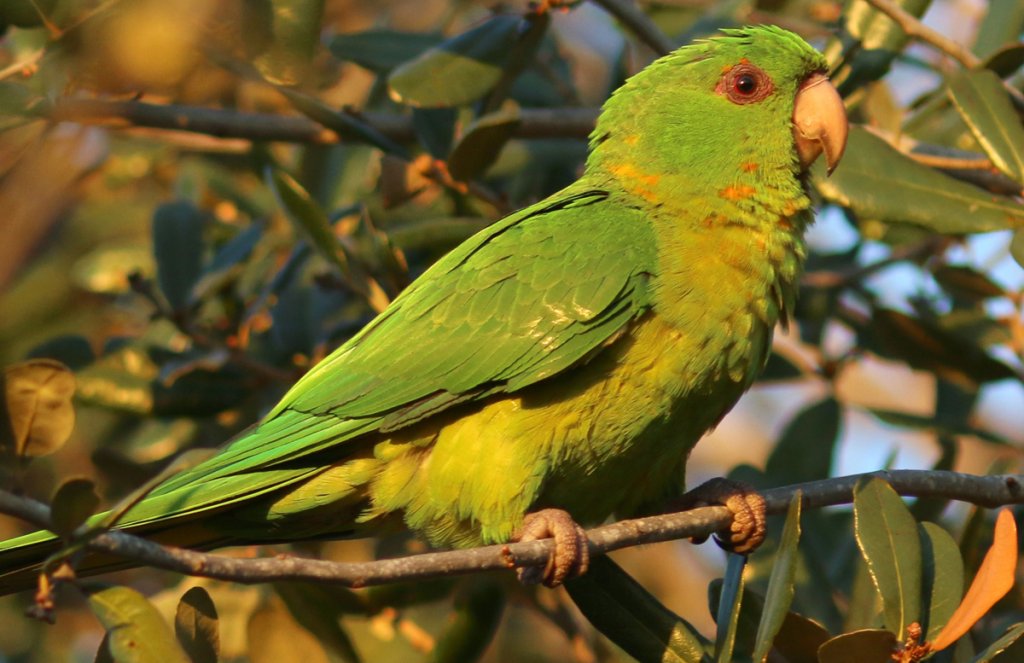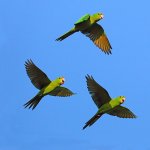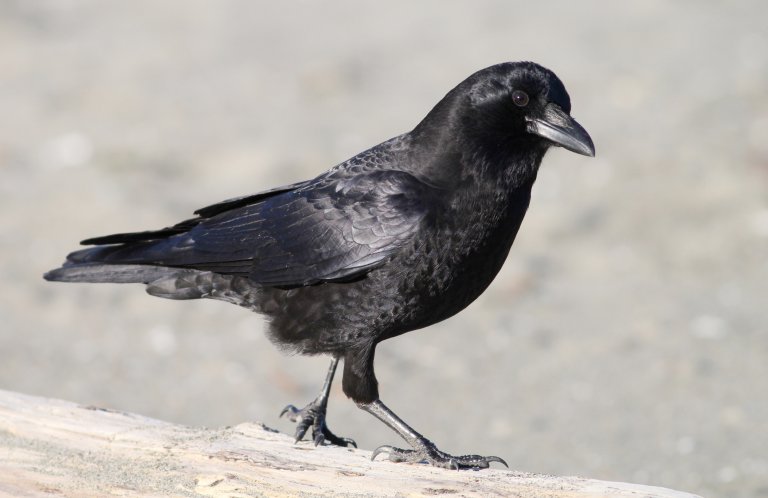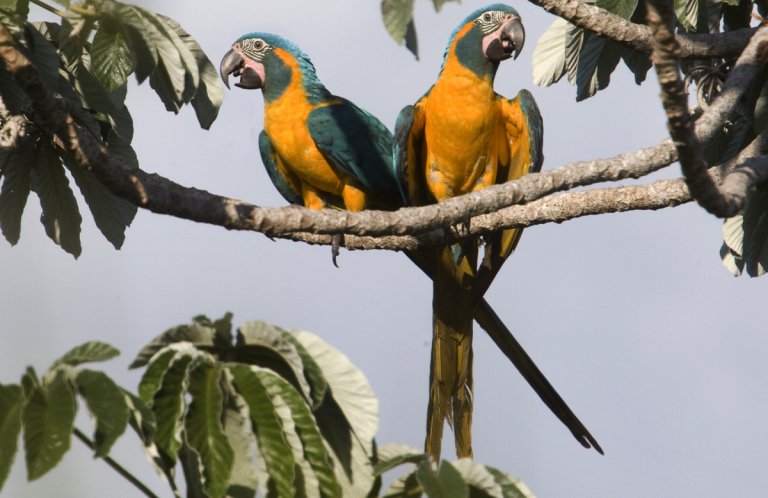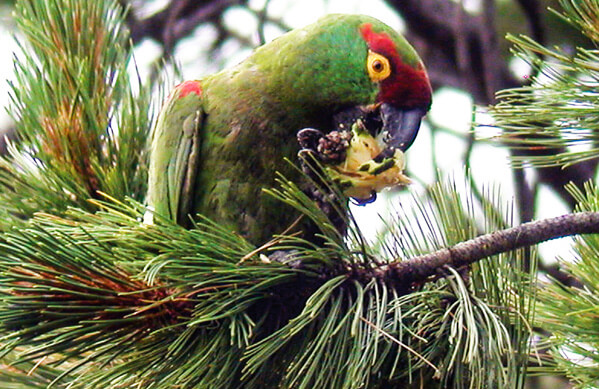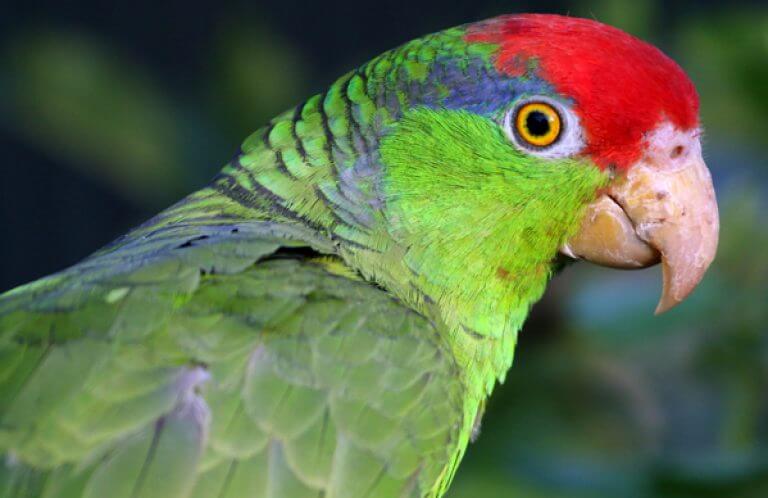About the Green Parakeet
The Green Parakeet, also known as Green Conure or Mexican Green Conure, is a long, slim parrot, just a bit smaller than an American Crow. This aptly-named species is mainly green, shading to a paler yellowish-green on its underparts. Its cheeks and throat have varying amounts of red speckling, and its bill is a light orange color. As with most parrot species, the sexes look alike.
This pale-billed parakeet's distribution and taxonomy have proved to be an ongoing challenge for ornithologists.
Unsettled Taxonomy
The Green Parakeet's place on the avian family tree seems to be ever-shifting, as scientists find out more details about it and its close relatives. The Socorro Parakeet, a Mexican endemic restricted to one tiny island, was once considered a subspecies of Green Parakeet, but has been separated into its own species based on a number of differences. Some scientists still classify the Socorro as a Green Parakeet.
The Pacific Parakeet, found in the lowlands of southwestern Mexico and Central America, was also formerly considered a subspecies of Green Parakeet. Although the species has been split, it is difficult to distinguish between the two in the field.
And just to complicate matters even further, the “Red-throated” subspecies of Green Parakeet, found in Central America, may represent a separate species, based on its geographic isolation and genetic differences. As more information comes to light it may eventually be split into a separate species.
Songs and Sounds
Like all its relatives, the Green Parakeet has a number of raucous, screeching calls. Its flight call is described as "a rolling, harsh, and high-pitched screek…screek.”
Calls:
Calls and flight calls:
Breeding and Feeding
Like species ranging from the Blue-throated Macaw to the Northern Emerald-Toucanet, the Green Parakeet is typically a “secondary” cavity nester, taking up residence in a tree cavity excavated by another bird (usually a woodpecker). It will also roost and nest in crevices on tall termite mounds, or in rocky cliff crevices and caves. If using the latter, Green Parakeets nests in groups (a habitat known as colonial nesting). ABC staff member David Wiedenfeld has even noted Green Parakeets roosting, and probably nesting, inside crevices within an active volcanic crater in Nicaragua!
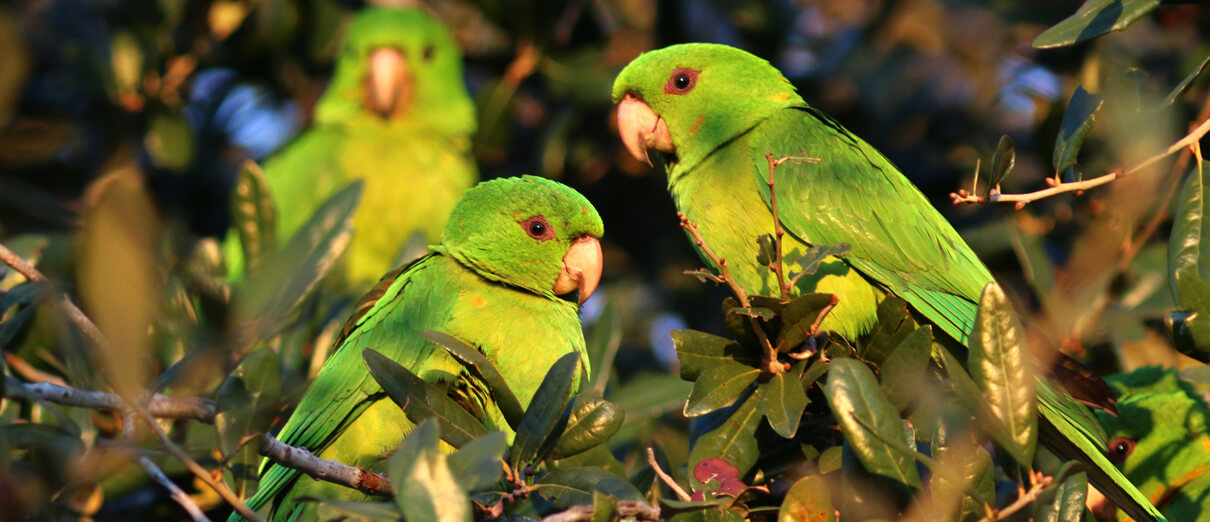
Once a nest site is selected, the female Green Parakeet lays 3-4 white eggs, which hatch after approximately a month. The chicks hatch blind and naked, but are fully feathered by the time they fledge in another several months.
Like larger relatives such as the Thick-billed Parrot and Military Macaw, the Green Parakeet feed primarily on seeds and fruit, but has been recording taking insects.
Although it pairs up while nesting, Green Parakeets congregate in large groups during the winter months. Groups of Green Parakeets make long foraging flights to food sources, particularly during the nonbreeding season. This parakeet readily feeds on cultivated crops such as corn and fruit, and is persecuted as a crop pest in some places. Although the Green Parakeet is non-migratory, groups may make lengthy local movements in response to food supply.
Region and Range

The Green Parakeet is native to Mexico and Central America. Like the Red-crowned Parrot, another Mexican native species, its populations have expanded into the Rio Grande Valley of southern Texas. These birds could have originated from introduced individuals or by natural dispersion. Small feral populations (probably introduced) of Green Parakeet can be found in other U.S. states, such as Florida, as well.
Conservation
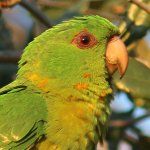
Help support ABC's conservation mission!
Like other birds of neotropical forests, the Green Parakeet faces the threat of habitat loss. In addition, it's a popular target for the pet trade, especially within its home range countries. Partners in Flight includes the Green Parakeet on its Yellow Watch List as a species with population declines and moderate to high threats.
Get Involved
Many of the rarest bird species in the Western Hemisphere remain relatively unknown. You can learn more about these birds and the threats they face by signing up for ABC's Bird of the Week email series, which frequently highlights these fascinating birds.
American Bird Conservancy and our partners throughout Latin America and the Caribbean have created and expanded more than 100 bird reserves, which protect upward of 1.1 million acres of vital habitat. Together, we've planted more than 6.8 million trees, helping to restore degraded and damaged habitat. You can help us continue to protect endangered birds by making a gift today.





































